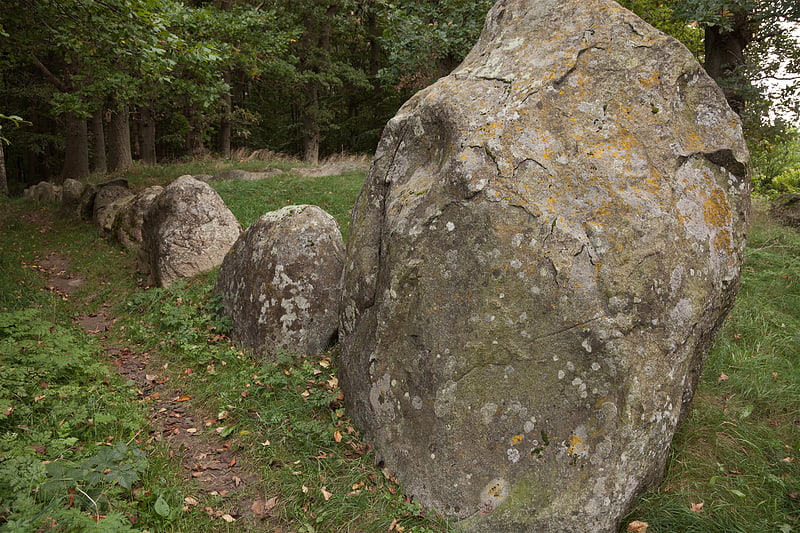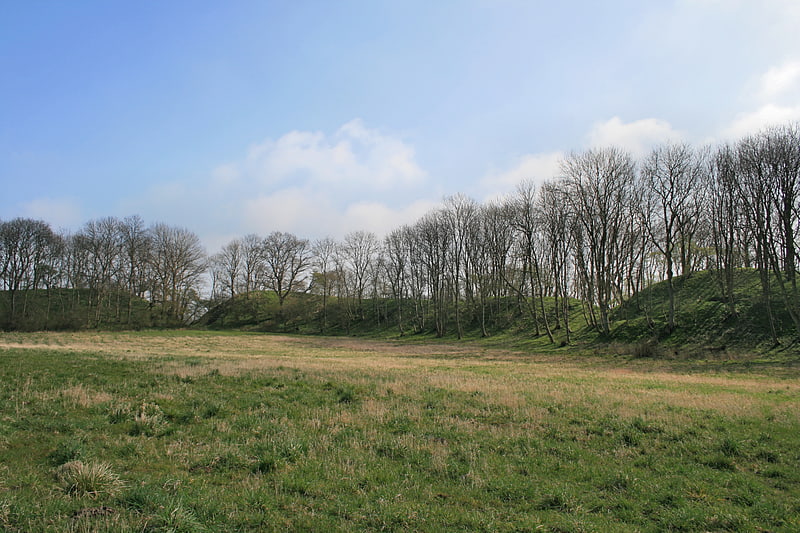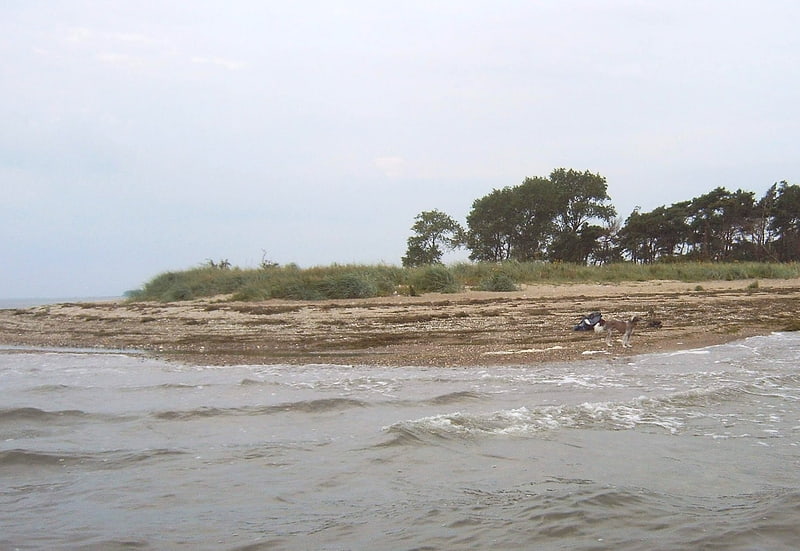Discover 4 hidden attractions, cool sights, and unusual things to do in Rügen (Germany). Don't miss out on these must-see attractions: Nardevitz Erratic, Great Dolmen of Dwasieden, and Charenza. Also, be sure to include Palmer Ort in your itinerary.
Below, you can find the list of the most amazing places you should visit in Rügen (Mecklenburg-West Pomerania).
Table of Contents
Nardevitz Erratic

The Nardevitz Erratic, also called the Great Rock of Nardewitz, is one of the largest glacial erratics in North Germany. It lies about 400 metres north of Nardevitz, a village in the parish of Lohme on the island of Rügen. Surrounded by trees and bushes as well as other drift material that was in the way of farming, it lies in the middle of a field. Its volume is estimated at 104 m³, which gives it a mass of 281 tonnes. The above-ground portion has a volume of 71 m³. It is therefore, apart from Buskam which lies in the Baltic Sea off Göhren, the largest erratic on Rügen and an important geological sight.
Because the Nardevitz Erratic was used for a long time to obtain construction material, it is suspected today that it was once three times its present size. For example, in 1854 and 1855, column drums weighing about five tonne and pedestal blocks, up to 2 tonnes in weight, for the Prussian Columns near Neukamp and Groß Stresow were hewn from the rock. On the rock itself there are clear traces that show there were plans for further destruction of the erratic.
Today the Nardevitz Rock, like around 20 other erratics on the island of Rügen, is one of its legally-protected geotopes. It is recorded in the relevant register at the Mecklenburg-Vorpommern State Office for the Environment, Conservation and Geology (Landesamt für Umwelt, Naturschutz und Geologie Mecklenburg-Vorpommern) as entry "G2 75".[1]
Great Dolmen of Dwasieden

The Great dolmen of Dwasieden, is a great dolmen in the borough of Sassnitz, on the Jasmund peninsula of Germany's largest island, Rügen. It was excavated in 1970 by Ewald Schuldt and is designated a Sprockhoff No. 472. The megalithic site of the Funnelbeaker culture was constructed between 3500 and 2800 BC.
According to Ingrid Schmidt, "Neolithic monuments are an expression of the culture and ideology of New Stone Age communities. Their creation and function are features of social development". The site was painted in 1806 by the Greifswald-born artist, Caspar David Friedrich (1774–1840). His diagrams and sketches are kept in the Ashmolean Museum of Art & Archaeology at Oxford.[2]
Charenza

Charenza, also Karentia or Karenz, later also Gharense, was a medieval Slavic burgwall on the island of Rügen in the Baltic Sea. It was the administrative centre of the Rani tribe and of the Principality of Rugia. Today, the remnants are called Venz Castle.[3]
Palmer Ort

The Palmer Ort is the southernmost point of the German Baltic Sea island of Rügen and its peninsula of Zudar. The cape lies on the territory of the municipality Garz/Rügen.[4]